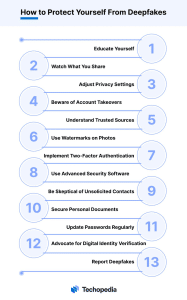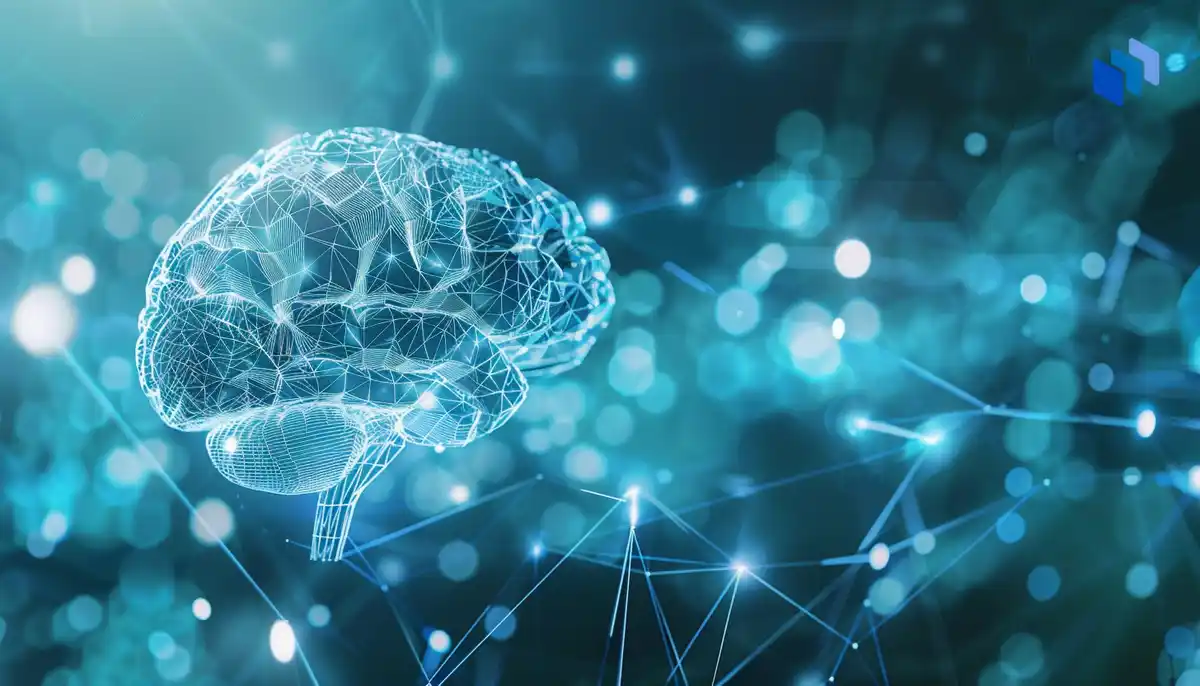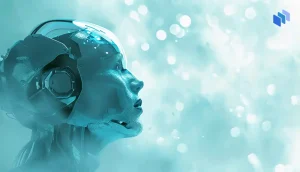Deepfakes are on the rise. AI has been used to clone US and UK politicians, and thousands of celebrities have fallen victim to deepfake pornography, but it is not just affecting world leaders and famous people.
Human Rights Watch (HRW) published a recent report claiming that personal photos of children have been scraped off the internet by the LAION-5B dataset and used to train AI tools without the children’s knowledge or consent.
According to HRW, these tools are being utilized to “create malicious deepfakes” that put “children at risk of exploitation and harm.”
Hye Jung Han, children’s rights and technology researcher at HRW, stated:
“Children should not have to live in fear that their photos might be stolen and weaponized against them. The government should urgently adopt policies to protect children’s data from AI-fueled misuse.”
In response to HRW, LAION, the German nonprofit that created LAION-5B, has pledged to remove the images found by the watchdog.
This is another tragic reminder that the internet can be a dark place filled with predators waiting to exploit the most vulnerable within society. So, how could we protect them?
Key Takeaways
- The LAION-5B AI training dataset has scraped photos of children off the internet.
- AI tools trained on LAION-5B data are being used to create malicious deepfakes of children.
- Major risks include sexual exploitation and manipulating young people into committing crimes.
- Preventive measures include legislation and greater openness between parents and their children concerning online activity.
Unintended Exposure: Intimate Photos Found in LAION-5B Dataset
LAION -5B is an AI training dataset of 5.85 billion image-text pairs. It is “14x bigger than its predecessor,” LAION-400M, making it “the biggest openly accessible image-text dataset in the world.”
Not only did Han’s analysis find that over 170 photos of Brazilian children spanning “years or even a decade before LAION-5B was created” had been swept up into the data library, but names, source URLs, and information about the subject’s location when the photo was taken were also provided.
The images found came from “personal blogs and photo- and video-sharing sites,” indicating that this material was never intended to be accessed by the general public.
Everyone knows the adage, “Once on the internet, always on the internet,” but the reality of digital permanence doesn’t completely undercut privacy.
The report indicated that while the photos were technically accessible, they had been seen by very few people and “do not appear to be otherwise possible to find through an online search.”
The photos portray some incredibly intimate moments, including the birth of babies and children dancing in their underwear.
One example features a 2-year-old girl interacting with her newborn sister. “The caption and information embedded in the photo reveals not only both children’s names but also the name and precise location of the hospital…where the baby was born nine years ago on a winter afternoon,” HRW reported.
In all likelihood, the problem reaches beyond this initial exploration, as Han and her team reviewed less than “0.0001 percent of the 5.85 billion images and captions” contained in LAION-5B.
The Risks of AI & Online Child Exploitation
This is not the first time LAION has been pulled up on issues concerning privacy and consent.
A disturbing example relates to a 2023 study undertaken by the Stanford Internet Observatory, which “detected many hundreds of instances of known CSAM [child sexual abuse material] in the [LAION-5B] training set”. According to the study, the “unguided crawling” implemented by LAION directly enables AI systems to create explicit material.
LAION responded by emphasizing its “zero tolerance policy for illegal content” and confirmed that they were “temporarily taking down the LAION datasets to ensure they are safe before republishing them.” Clearly, more work is required.
LAION has a zero tolerance policy for illegal content. We work with organizations like IWF and others to validate links in the LAION datasets with filtering tools developed by our community and partner organizations to ensure they are safe. https://t.co/SStsqukbFK
— LAION (@laion_ai) December 20, 2023
AI that is trained on CSAM can also transform images of clothed children into nude photos. The child psychiatrist, David Tatum, was given a 40-year prison sentence after it was revealed that he had utilized AI to alter photographs of clothed minors into pornographic material.
The evidence, as reported by 404 media, certainly points towards AI systems being used to generate CSAM, but the HRW outlines another threat to the safety of children. The possible risk of predators stealing a child’s “likeness from photos or videos of themselves posted online” and using “AI to manipulate them into saying or doing things that they never said or did” has dramatically increased.
Jenny Faherty manages a team of social workers in a UK-based local authority. When asked about the rise in online child sexual exploitation, she stated that adults impersonating children on social media platforms, such as Snapchat, is becoming more prevalent. Faherty expressed concern that AI could easily facilitate this ever-growing deception.
“The biggest risk would be an adult using advancing technology to exploit a young person. They could use AI to enter a child’s world and gain their trust.”
Faherty highlighted that open forums, such as gaming chat rooms, are one of the easiest ways to open up a line of communication.
Whether it’s sexual exploitation through the sharing of photos and videos or manipulating young people into drug dealing and perpetrating youth violence, such platforms are like “A fishing pond for predators.”
How to Protect Against Deepfakes & Other Threats
The HRW report urges lawmakers to ban “the nonconsensual use of AI to generate sexually explicit images of people, including children.” However, they acknowledge that this doesn’t tackle the “deeper problem [of] children’s personal data remain[ing] largely unprotected from misuse.”
Sian Watson, a family practitioner and former police officer in a child abuse unit, relayed that very vulnerable children as young as eight are being exploited online, and the best preventative action is to promote greater openness between parents and their children.
Watson told Techopedia:
“Young people must understand that once a photo is out of their possession, they have lost control of how it’s used. It’s not just about the potential for immediate exploitation, but what you share could come back and haunt you twenty years down the line.”
Similarly, Cassie Clarke, a domestic abuse worker, believes that the children who are most susceptible to exploitation “don’t have the stereotypical upbringing or stability at home.”
She underlined the importance of creating a family culture of honesty and openness and advocated for having proactive conversations about online safety before it’s too late.
The Bottom Line
Deep fakes and other sources of fabricated content have been around for a long time, but as HRW outlines, “they required time, resources, and specialized expertise to create and were largely not very realistic.”
This is no longer the case.
AI has proven to be a largely free and fast way of aiding predators. The reality is chilling. Libraries of CSAM can be created in seconds and, through the generation of false identities, many children are being tricked into believing they are communicating with another child.
The UN Convention on the Rights of the Child is clear that every child has the right to protection from abuse.
Parents have a responsibility, but their power is limited. Governments must introduce legislation, organizations must be held to account, and society must exercise its collective responsibility in tackling online child exploitation.
FAQs
What are the risks of AI for children?
Is it illegal to make a deepfake of a minor?
Are deepfakes identity theft?
References
- Warning to UK politicians over risk of audio deepfakes that could derail the election | Politics News | Sky News (News.sky)
- Nearly 4,000 celebrities found to be victims of deepfake pornography | Deepfake | The Guardian (Theguardian)
- Brazil: Children’s Personal Photos Misused to Power AI Tools | Human Rights Watch (Hrw)
- AI image generators trained on pictures of child sexual abuse, study finds | Artificial intelligence (AI) | The Guardian (Theguardian)
- LAION-5B: A NEW ERA OF OPEN LARGE-SCALE MULTI-MODAL DATASETS | LAION (Laion)
- Identifying and Eliminating CSAM in Generative ML Training Data and Models | Stanford Digital Repository (Purl.stanford)
- Safety Review for LAION 5B | LAION (Laion)
- Conversation (X)
- North Carolina psychiatrist, David Tatum, hit with 40 years for using AI to make child porn (Nypost)
- a16z Funded AI Platform Generated Images That “Could Be Categorized as Child Pornography,” Leaked Documents Show (404media)
- Child sexual abuse content growing online with AI-made images, report says | Technology | The Guardian (Theguardian)
- UN Convention On The Rights Of The Child | Save the Children UK (Savethechildren.org)







